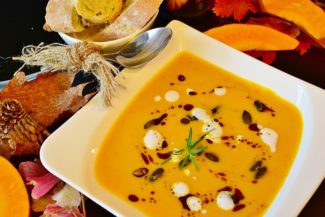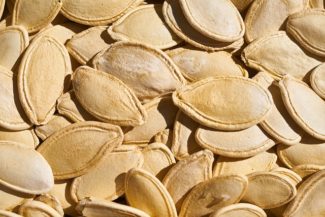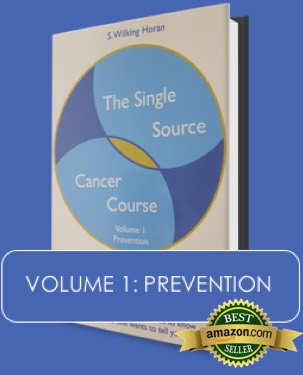 A CULINARY STAR FOR THE HOLIDAYS
A CULINARY STAR FOR THE HOLIDAYS
Welcome back to the Blog everyone! It’s November already and the holidays are upon us. Halloween has passed, Thanksgiving is right around the corner, and the winter holidays including Christmas, Hanukkah, and New Year’s Eve are all on their way.
It’s that time of year for celebrating, sharing with family and friends, cooking and baking up a storm, and expressing gratitude for all we have and all we are. And, of course, food is a big part of the celebration, which brings us to this week’s culinary star, the pumpkin.
First of all, let’s clear up a little confusion surrounding this particular and popular piece of produce. The pumpkin is a fruit, not a vegetable. And this is why. A pumpkin develops from a flower on the pumpkin vine and also contains seeds. The science of botany, therefore, classifies the pumpkin as a fruit, even though it’s related to the family of gourds and squash. As far as history goes, pumpkins were first found in Central America and Mexico where they were a popular food source for hundreds of years and as we all know, continue to be today.
From, jack-o-lanterns, to pumpkin pie, to toasted seeds by the fireplace, the pumpkin is a staple during the holiday season. Yet, in addition to its versatility, the really great thing about pumpkins is that they are one of the healthiest foods we can eat.
Pumpkin is an excellent source of beta carotenes, cryptoxanthin, lutein and zeaxanthin. These are the compounds that not only give the pumpkin its yellow-orange color, but protect our eyesight and help prevent age-related macular degeneration as we grow older.
The pumpkin also is a powerhouse of several cancer-fighting antioxidants, including vitamin E, vitamin C and vitamin A. Indeed, the pumpkin contains some of the highest levels of vitamin A available in food sources, which is so important for nourishing the skin, maintaining good visual clarity, and protecting us from lung and oral cancers.
 The B-complex group of vitamins, including vitamin B-6, thiamin, niacin and folates, found in pumpkins improve the circulation of oxygen in the body and the brain that aid in concentration and mental clarity. And, of course, the addition of phosphorus, potassium, calcium, copper, and zinc, help maintain strong bones and teeth while the fiber in pumpkins improves digestion and aids metabolism.
The B-complex group of vitamins, including vitamin B-6, thiamin, niacin and folates, found in pumpkins improve the circulation of oxygen in the body and the brain that aid in concentration and mental clarity. And, of course, the addition of phosphorus, potassium, calcium, copper, and zinc, help maintain strong bones and teeth while the fiber in pumpkins improves digestion and aids metabolism.
It’s also nice to know that the pumpkin has one of the lowest caloric impacts on our bodies of any produce on the market. 100 grams of pumpkin weighs in at just 26 calories, and contains no cholesterol or saturated fats, so it’s great for our heart health and maintaining a balanced body weight.
So, feel free to go crazy when it comes to this healthy and delicious fruit. Enjoy this seasonal treat in soup, sauces, smoothies, and salads. Mix up a batch of muffins, pancakes, and cookies. Bake up a cake, a pie, and breads galore. And don’t forget the seeds, which are excellent sources of protein, minerals and vitamins, that are heart-healthy and heart-friendly as well.
This is a wonderful time of year and I hope everyone enjoys the season as much as I do. It’s the beginning of the holidays, and I hope we all spend these days in comfort and joy with family, friends, festivity and fun. Until next time everyone, take care of each other, stay safe, stay in GOOD HEALTH and . . .
TAKE THE COURSE AND TAKE CHARGE!



Leave a Comment